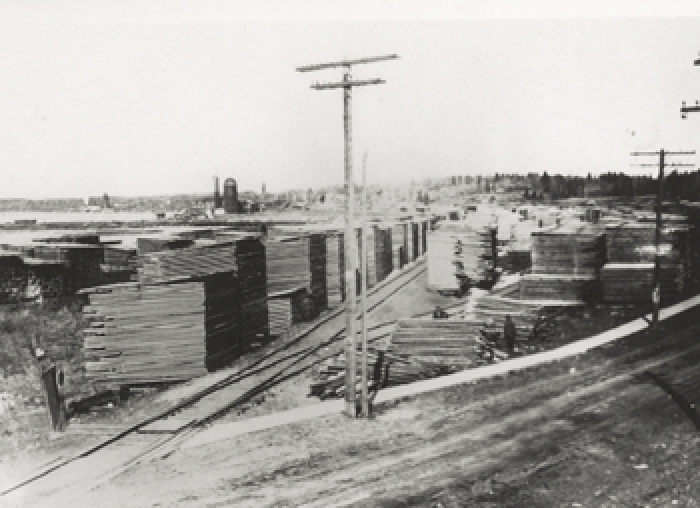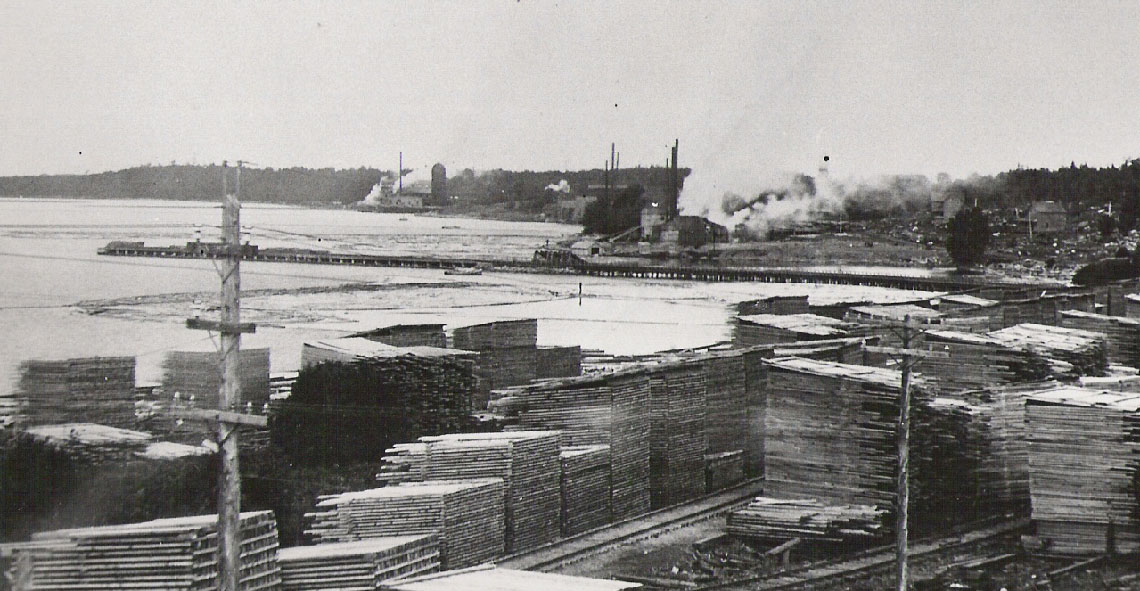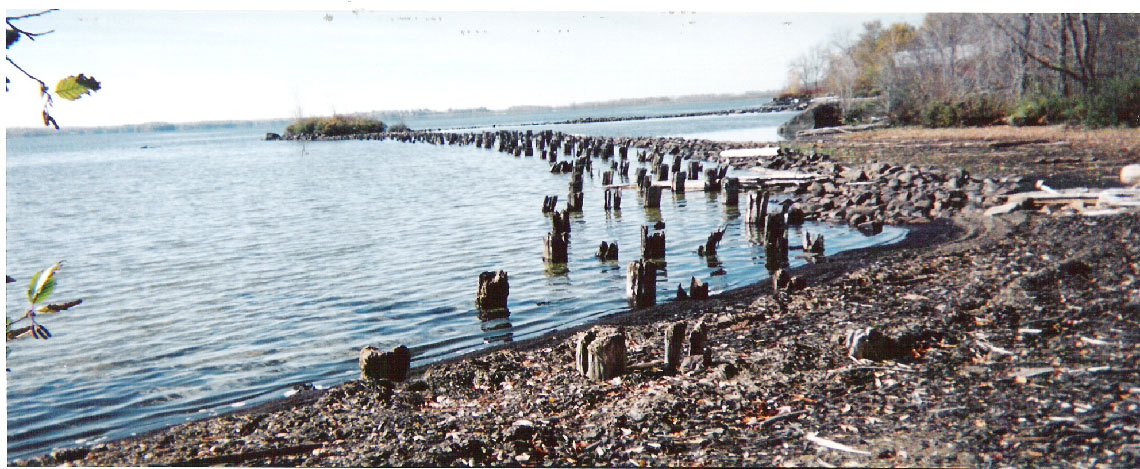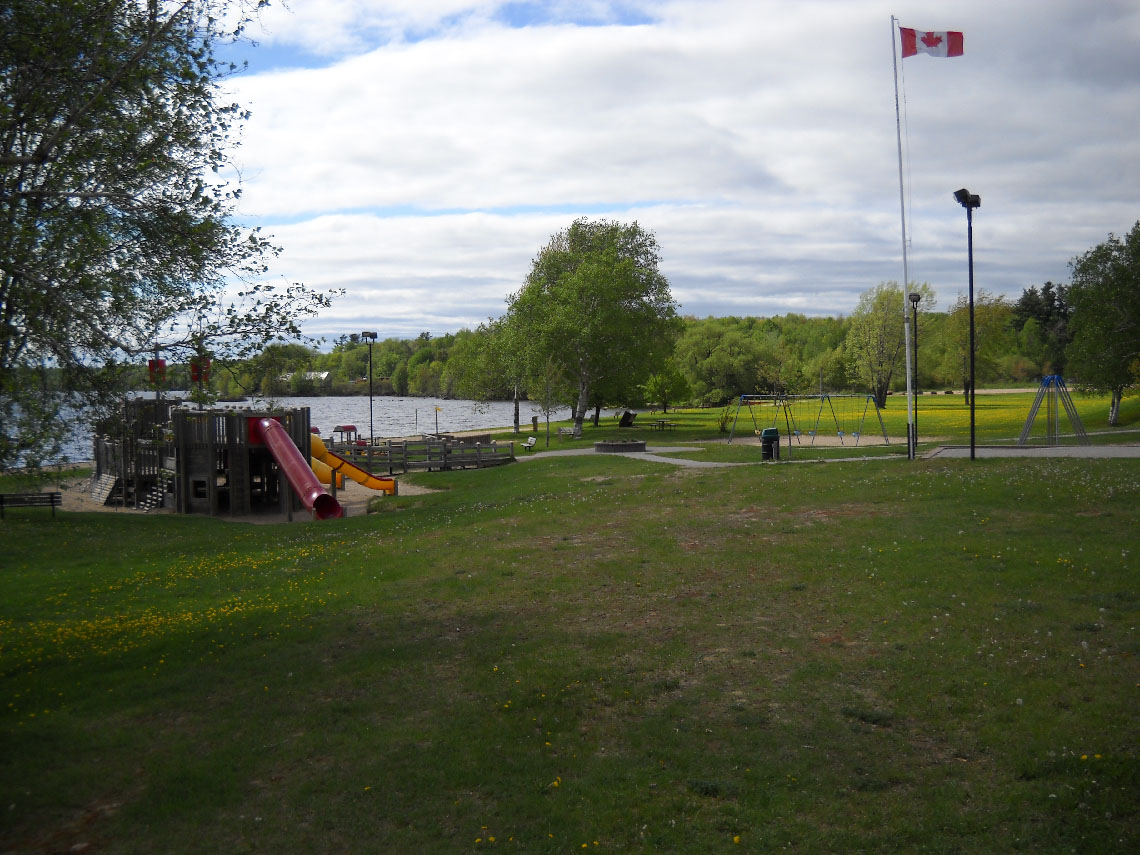
Centennial Park
Centennial Park is a lovely place today, with the playground, splash pad, picnic area and large space ideal for children, and also for special events such as the Canada Day FunFest celebration.
Originally, it was very different because Callander was a mill town as Lake Nipissing was surrounded by good pine. Callander Bay was protected, and there was train access from both the Canadian Pacific Railway coming from the north down to the Smith Mill, and the Canadian National Railway coming from the south and heading north. At the north end of town, the sidings for the Canadian Timber Company and the Smith Mill split off from the main line, and this area was known as the ‘Y’. In the photo in the gallery below, the beginning of the ‘Y’ is easily seen between the lumber piles.
It was also an ideal storage place for lumber. Many people’s earliest memories of driving through Callander were of the giant piles of lumber. You can see in the photo in the gallery below that the piles to the left have been ‘stickered’, with small stakes between the layers of wood, to allow them to dry better. The piles to the right are either not ‘stickered’ yet, or were to be sold not dried as well. In the centre of the photo is seen a railway trestle bridge, and a train on it. This was used to take coal out to the steamships. The bay is quite shallow here, and the ships could not come very close to the shore. When the trestle bridge was no longer needed, it was simply cut off at post level. The posts are still there, as you can see in the photo in the photo gallery. You can see from the size and closeness of the posts that it was for something much sturdier than a dock – the locomotives and coal cars were heavy.
The Smith Mill in the background was a Callander landmark for many years. The mill closed in 1967, and the yards closed shortly afterwards. Converting the lumber yards to a park was chosen as a Callander celebration for the 1967 Canadian Centennial.




